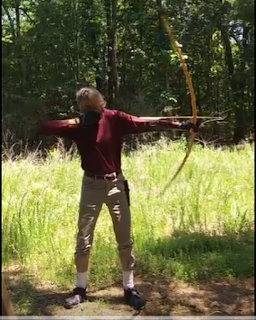But it doesn't always work. In some cases the chain gets wrapped around or snagged in the rear cassette and trying to pedal it back on can result in a broken derailleur hanger. No big deal, right? Replaceable derailleur hangers are designed to break so that other parts of the bike (the frame, the rear mech, etc.) are protected. But things don't always go as intended. Three times in the past couple of years, I have broken my hanger and had to replace a variety of other parts. The last time, my chain got so tangled in the rear cassette that the wheel locked up at 20 mph, sending me into a long skid down the blacktop. Fortunately I kept the bike up, but I later measured the skid mark at over 20 feet!
That lock-up caused a broken derailleur hanger, seriously bent front and rear mechs, a chain bent in multiple places, and a cracked seat-stay on my carbon CR4. My initial reaction to all that damage was to declare the frame a total loss and to use the salvageable parts (shifters, handlebars, brakes, pedals, bar tape) to upgrade the components on my ancient Giant OCR3 (22 pounds when new in 2001, 20.5 after the upgrades).
With all the parts stripped from my CR4 crankset-frame-and-fork, I was able to appreciate how incredibly light it was. And I got to thinking. I've been making stuff with fiberglass for over 40 years -- most recently my CLC Shearwater Sport Sectional and my Northeaster Dory. How different could it be to repair a fairly trivial crack in a carbon fiber frame-set. The seat-stay was still very stiff. Wrapping it with a couple layers of carbon fiber cloth and soaking that cloth with epoxy resin should make that seat-stay as strong as new. I spent $30 on Amazon and got a small roll of carbon fiber cloth and and some small bottles of resin and hardener.
The epoxy repair went very well. I could have done a lot of sanding and some additional epoxy work to make the repair look pretty, but the sanding would have weakened the area by cutting into some of the carbon fiber, and the additional epoxy would have added weight with no increase in strength. So my repair looks like a repair. Big deal!
Here is a picture of the cracked area before the repair:
To begin riding the bike again, I needed to replace multiple links on the bent chain, throw away a badly bent front derailleur, straighten the bent rear derailleur cage, piece together some bar tape, and salvage a pair of old SPD pedals. The pedals should look like this:
But the bolt holding on the spring mechanism of one pedal had snapped. Even though I couldn't figure out a way to repair the pedal, I thought it just might work without the rear portion, functioning like an old-fashioned toe-clip.
Sliding the tip of the cleat under the metal toe-retainer should hold one's foot in position fairly well, as long as the force of the pedal stroke is forward and down. Sad fact is, I'm not a sprinter and I generally don't pull up on my pedals.
So I built the bike up.
Because there is no front derailleur, it's a 10-speed bike with a 34-tooth chain-ring and an 11x28 cassette. How big a deal is it to have only a 34 up front? In hill country it's not a big deal at all. At a cadence of 90 rpm, the bike will go about 21.8 mph on flat ground. But 20 mph is the fastest time trial speed I've ever been able to maintain. I'm sure I'd like a 50-tooth chain-ring if I spent a lot of time "sucking wheel" on group rides. I don't. I almost always ride alone or side-by-side with a single friend. I really don't like holding the wheel and staring at someone else's butt for long periods of time! When the road slopes downhill, I now stop pedaling and get into an aero tuck; the bike accelerates to nearly the same speed I could maintain by pedaling in the 50-tooth chain-ring.
So here are my three conclusions from this experimental effort:
1. A modern road bike can be changed to a 10-speed with almost no loss in its capability. In fact, the single chain-ring means lighter weight, greater simplicity, and more reliability. Dropping a chain is now almost impossible, as is breaking a derailleur hanger. Fussy front derailleur adjustments are a thing of the past.
2. Carbon fiber frames can be repaired easily -- at least if the cracks are minor and the frame is still intact and strong. Even so, I would not attempt to repair a cracked fork; if that repair failed, the crash would send me sailing into a forward endo.
3. Modern clipless pedals should be adjusted so that they release very easily. Hardly anyone pulls up hard on the pedals. There is no need for those embarrassing falls when one can't unclip quickly enough to put a foot on the ground.
Update 5/31/202: With a couple of minor changes, my bike of broken parts has once again become my main ride. First, I put on a different set of clipless pedals to improve my connection to the bike. But I do have the springs on the pedals adjusted so that they release very easily. Second, I replaced the 34-tooth chainring with a 39-tooth ring. This will allow me to crank it up to 25 mph on the flats. I'm also using the superlight American Classic Sprint 350 front wheel that originally came with my Motobecane Le Champion SL. If I remove the unnecessary 50-tooth chainring, I'll save another ounce or two on what now seems to me to be a very sweet setup!














